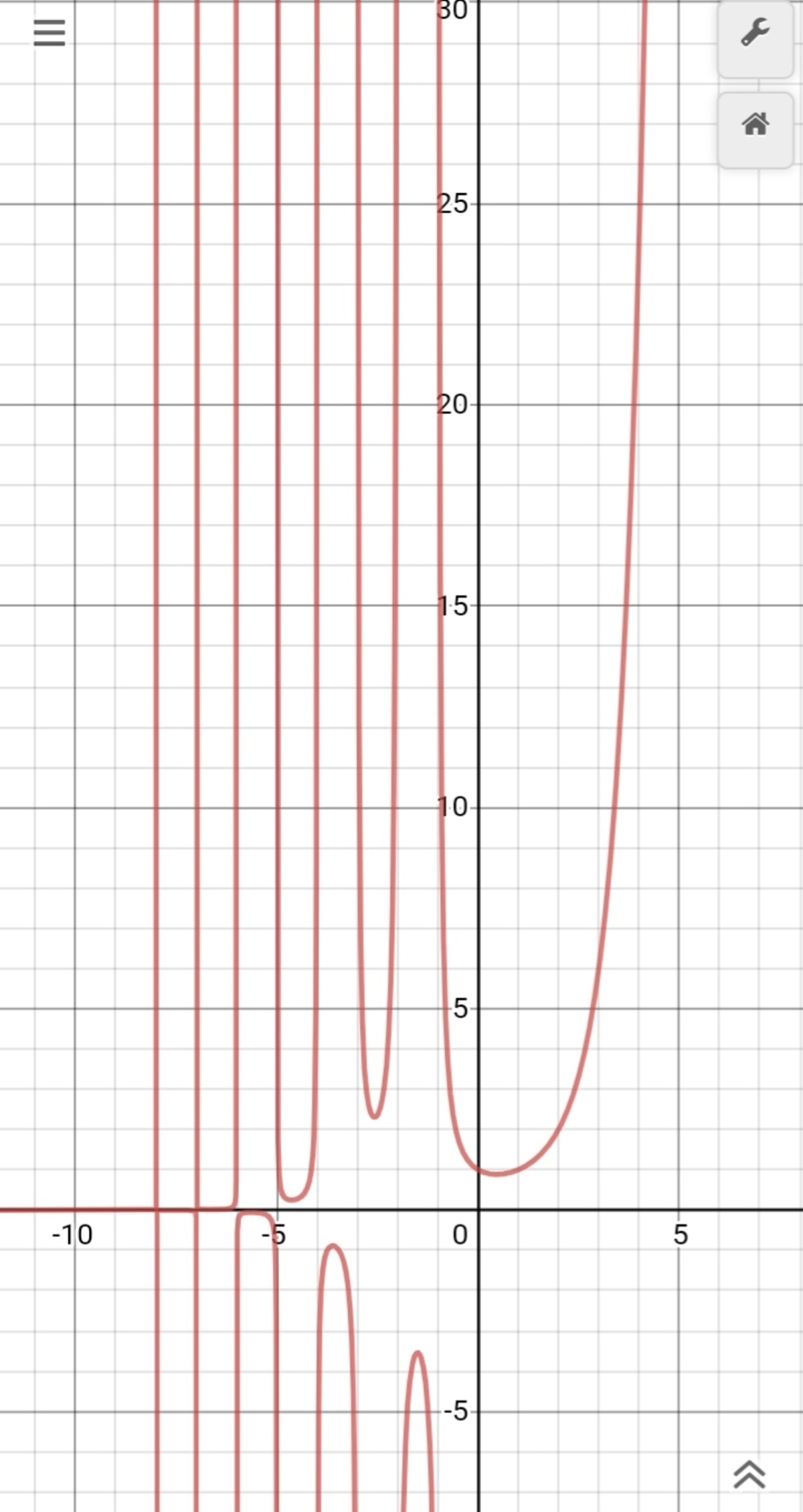Expanding the factorial
What is the factorial of some ?
First what's a factorial? The factorial of a number n is the number of ways of arranging n objects in a line. Mathematically,
So
So what is the value of ?
To find the answer, let us first see the graph of
 Desmos
Desmos
Surprise! Surprise!! Turns out, exists for negative integers as well. How? For that, we return to the graph again.
We can see that the function satisfies -
It is a "smooth" graph. So is convex.
Turns out, there's actually another function that satisfies all the three above conditions - the gamma function.
This would converge for some values of x, for some values, it won't.
So this leads to
We can now find the value of
Importance of the gamma function-
It pops up in many applications like quantum physics, fluid dynamics, statistics, number theory.
Further reading:
Easy Math Editor
This discussion board is a place to discuss our Daily Challenges and the math and science related to those challenges. Explanations are more than just a solution — they should explain the steps and thinking strategies that you used to obtain the solution. Comments should further the discussion of math and science.
When posting on Brilliant:
*italics*or_italics_**bold**or__bold__paragraph 1
paragraph 2
[example link](https://brilliant.org)> This is a quote# I indented these lines # 4 spaces, and now they show # up as a code block. print "hello world"\(...\)or\[...\]to ensure proper formatting.2 \times 32^{34}a_{i-1}\frac{2}{3}\sqrt{2}\sum_{i=1}^3\sin \theta\boxed{123}Comments
Really good! But calculators don't show it, why? @Adhiraj Dutta
Log in to reply
Because they don't use the gamma function. Instead they use an approximation using Stirling's approximation.
I found this on a reddit post.
Log in to reply
Thanks, @Adhiraj Dutta.
I have a challenge for you - can you find 4π !?
Log in to reply
Isn't it n=0∑∞3((n+1)(n+3))π? :P
Log in to reply
That's not what my question was about...
Log in to reply
Did you mean factorial of 4π?. Use Wolfram Alpha.